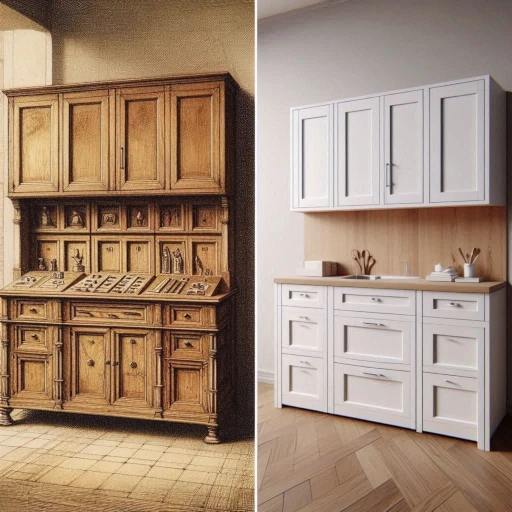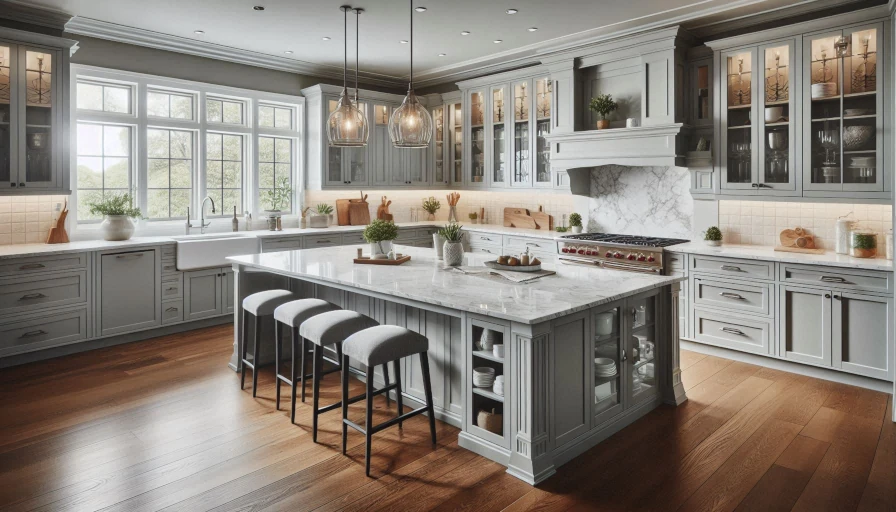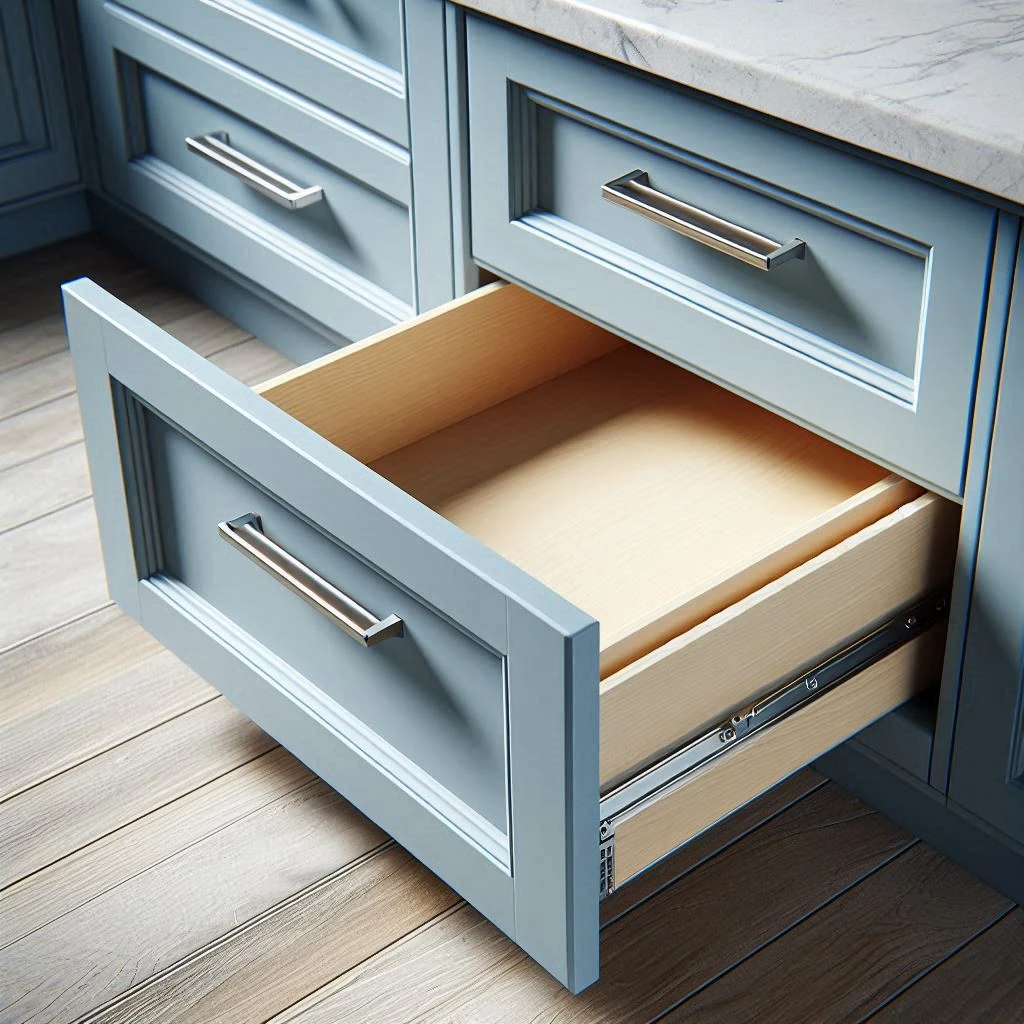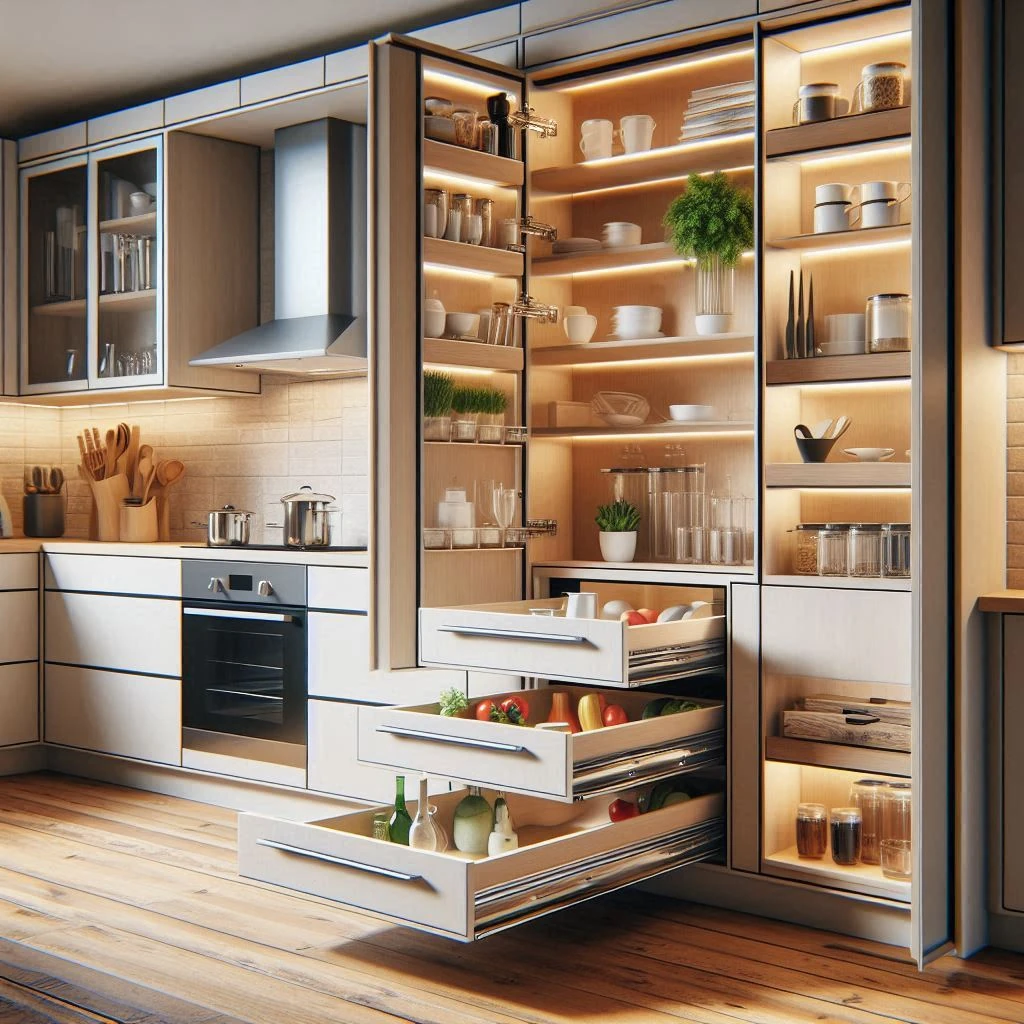Winter Deals! Free shipping over $2999
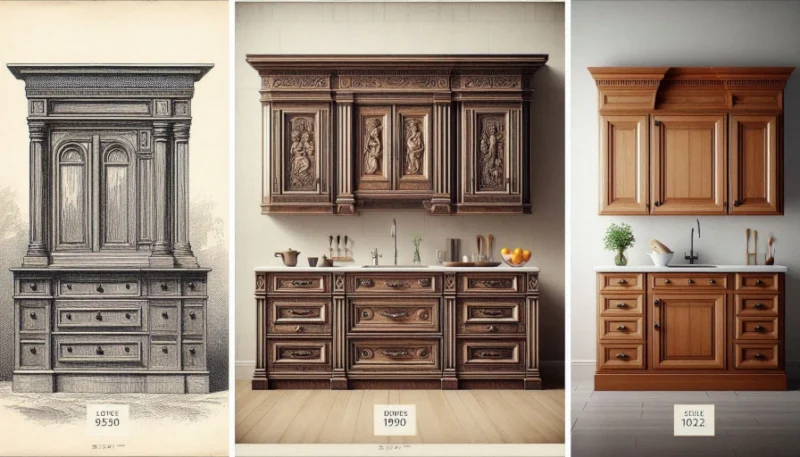
A cabinet is a case for storing or exhibiting items and may contain shelves and/or drawers, mounted with door hardware. While some cabinets are built into walls or linked to them, others are freestanding. Generally, cabinets are constructed from engineered or solid wood (often with veneers or artificial finished surfaces).
History: Fine furniture was rare in Western Europe and North America prior to 1650. Most of the time, folks could not afford it and did not need it. They managed with basic yet functional parts. Rich people who could afford it often preferred highly ornamental cabinetry styles. This lasted for centuries

The double cabinet, crafted by Hughes Sambin (1570–1600), has the architectural details and relief carvings that define French furniture from that era.
Schools of design included Glamour, Scandinavian, French Provincial, Early American Colonial, Rustic, Mission Style, Oriental and Shaker.

The United Society of Believers in Christ’s Second Appearing, or Shakers, were an essentially religious sect that followed the tenets of practicality and simplicity. They created the unique Shaker furniture style. This minimalistic approach turned out to influence the leading kitchen and bathroom cabinet styles in the US.
The Evolution in the U.S.: In the 19th and early 20th centuries, the Industrial Revolution brought about mass production and the development of cabinetry as a standardized component in American homes. The introduction of new materials such as plywood and MDF, along with advancements in manufacturing, made cabinetry more accessible and affordable for the middle class.
Post-World War II, the rise of the suburban home brought a demand for modern kitchen cabinetry, as open floor plans and built-in storage became popular. Modern styles like mid-century and contemporary took over, embracing sleeker lines and less ornamentation.
Today, cabinetry continues to evolve with innovations in materials, finishes, and design, reflecting the changing tastes and needs of American homeowners. From classic designs to high-tech solutions, cabinetry remains a critical element of home functionality and aesthetics across the U.S.
